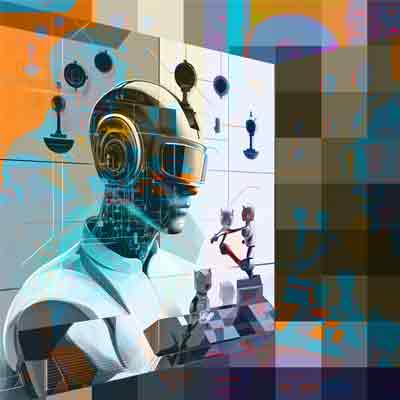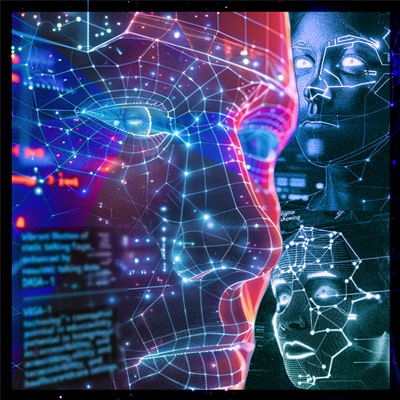Self-Predictive AI: Reshaping Reinforcement Learning through Self-AIXI
Nov. 15, 2024.
4 mins. read.
11 Interactions
Can AI predict itself? Self-AIXI transforms reinforcement learning, replacing exhaustive planning with foresight, promising efficiency and adaptability for AI-driven decision-making.
Imagine a reinforcement learning (RL) agent that not only reacts to its environment but anticipates its own actions, unlocking a new dimension in AI adaptability and learning efficiency. Researchers at Google DeepMind have introduced Self-AIXI—a groundbreaking RL model that maximizes learning through self-prediction. By emphasizing predictive foresight over exhaustive planning, Self-AIXI reduces computational complexity while enhancing adaptability, potentially transforming the landscape of AI-driven decision-making and dynamic interaction in complex environments.
The Foundations of Reinforcement Learning and AIXI
AIXI, a foundational model for universal artificial intelligence, operates on Bayes-optimal principles to maximize future rewards by planning across a vast array of possible environments and outcomes. However, its reliance on exhaustive planning presents a major computational burden, limiting its real-world scalability. Self-AIXI innovates on this framework by reducing the necessity for complete environmental simulations, instead predicting outcomes based on current policies and environmental states. This strategic shift enables more resource-efficient learning and decision-making.
Self-AIXI’s Core Mechanism: Bayesian Inference over Policies and Environments
The defining feature of Self-AIXI lies in its ability to perform precise Bayesian inference across both policy trajectories and environmental dynamics. Traditional RL models typically update their policies by recalculating strategies from scratch, imposing significant computational overhead with each decision point. Self-AIXI bypasses this by integrating learned policies into a continuous self-predictive framework, refining and adapting its behavior without redundant recalculations. This unique approach accelerates learning while retaining high levels of adaptability and precision.
Q-Learning Optimization through Self-Prediction
Self-AIXI’s self-predictive mechanism closely aligns with classical RL optimization techniques like Q-learning and temporal difference learning, but with critical distinctions. Unlike conventional models that estimate future rewards based solely on external stimuli and fixed policy trajectories, Self-AIXI anticipates its own actions within evolving environmental contexts. By doing so, it converges toward optimal performance with reduced planning complexity. This efficiency advantage makes it possible to achieve performance parity with resource-intensive models like AIXI, all while maintaining computational sustainability.
Balancing Computational Efficiency and Scalability
The scalability of Self-AIXI in practical applications remains an area of active investigation. While its theoretical model reduces computational demands, real-world deployment necessitates further exploration of its efficiency compared to traditional deep learning systems. Contemporary deep learning models benefit from vast data availability and intricate network architectures, enabling them to solve complex problems with unmatched accuracy. To compete, Self-AIXI must demonstrate equivalent robustness and adaptability without compromising on resource efficiency, training speed, or data utilization.
Practical and Theoretical Challenges
Despite its promise, several challenges remain for the practical adoption of Self-AIXI. Key considerations include:
- Data Utilization and Efficiency: Self-AIXI must optimize data usage and training speeds to compete with traditional deep learning systems known for their extensive datasets and computational intensity. Understanding how self-prediction scales with increasing data complexity and task demands will be critical for its viability.
- Energy Consumption and Resource Allocation: As AI systems scale, energy consumption becomes a significant concern. Self-AIXI’s resource-efficient learning approach must demonstrate tangible reductions in energy consumption compared to existing deep learning frameworks, validating its sustainability potential.
- Scalability in Complex Environments: Testing Self-AIXI across diverse and dynamic real-world environments is necessary to assess whether its self-predictive framework can maintain accuracy and adaptability without sacrificing computational efficiency.
The Role of Minimal and Discrete Models in AI Evolution
Self-AIXI’s focus on minimal, self-predictive architectures aligns with theories that simpler, rule-based systems can produce complex behaviors similar to those exhibited by modern AI. This idea resonates with Wolfram’s assertion that discrete systems can potentially match or complement the capabilities of complex deep learning models. For Self-AIXI and similar models to gain prominence, rigorous testing against existing AI paradigms is required, demonstrating comparable or superior performance across a spectrum of complex tasks, including natural language processing, image recognition, and reinforcement learning in dynamic environments.

Future Directions and Research Validation
To validate Self-AIXI’s potential as a minimal, efficient alternative to deep learning, researchers must focus on:
- Benchmarking Performance on Standard Tasks: Direct comparisons with traditional deep learning systems on benchmark tasks will reveal Self-AIXI’s practical utility.
- Scalability Testing Across Diverse Applications: Real-world applications often involve multi-layered complexities. Evaluating Self-AIXI’s adaptability across diverse contexts, including dynamic and unpredictable scenarios, will inform its long-term scalability potential.
- Energy and Resource Efficiency Metrics: One of the key benefits of minimal models is their potential for lower energy consumption and reduced resource usage. Measuring these attributes in large-scale AI implementations is critical to understanding their broader implications for AI sustainability.
Conclusion: Charting the Future of AI Learning
Self-AIXI’s self-predictive reinforcement learning approach offers a compelling new direction, shifting away from computationally intensive planning towards predictive foresight and adaptive behavior. While theoretical advantages abound, practical hurdles related to scalability, data efficiency, and energy consumption remain critical challenges. As researchers test and refine this model, Self-AIXI may redefine AI’s potential, offering smarter, more efficient agents capable of navigating increasingly complex environments with foresight and adaptability.
Reference
Catt, Elliot, Jordi Grau-Moya, Marcus Hutter, Matthew Aitchison, Tim Genewein, Grégoire Delétang, Kevin Li, and Joel Veness. “Self-Predictive Universal AI,” December 15, 2023. https://proceedings.neurips.cc/paper_files/paper/2023/hash/56a225639da77e8f7c0409f6d5ba996b-Abstract-Conference.html.
Let us know your thoughts! Sign up for a Mindplex account now, join our Telegram, or follow us on Twitter.


.png)

.png)


.png)











4 Comments
4 thoughts on “Self-Predictive AI: Reshaping Reinforcement Learning through Self-AIXI”
Self-AIXI’s focus on predictive reinforcement learning could pave the way for smarter, more efficient AI, but its real potential lies in proving scalability, adaptability, and resource efficiency in real-world applications.
🟨 😴 😡 ❌ 🤮 💩
"If AI can predict its own outcomes like Self-AIXI does, could we one day see AI systems creating and optimizing their own learning strategies without human intervention? How do you think this could impact fields like education or healthcare?"
🟨 😴 😡 ❌ 🤮 💩
It's fascinating how Self-AIXI aims to predict its own actions—this feels like a big leap in making AI systems more intuitive and efficient.
🟨 😴 😡 ❌ 🤮 💩
🟨 😴 😡 ❌ 🤮 💩